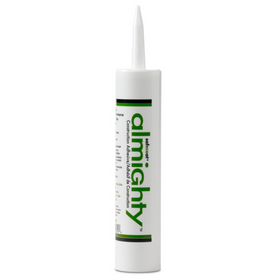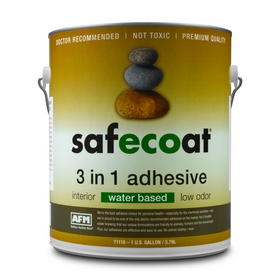
Composite Wood Siding: The Ultimate Guide
Last Updated: Mar 28, 2025The Horyuji Temple in Japan, made from the extremely durable Japanese cypress tree, was believed to have been built in the year 600 AD. At over 1,400 years old, it is easily the world's oldest wood structure and shows little to no sign of decomposition. Most buildings throughout history were built from locally available resources, usually earth and wood. When built from selected hardwoods, wood buildings could easily last hundreds of years. To name just one other example, the Nothnagle Cabin, located in Gibbstown, New Jersey, was built around 1638 and was recently listed for sale by the owners.
Today, many homeowners equate wood with the tiresome task of protecting their wood siding from the elements. Wood, of course, is biodegradable. With many old-growth hardwood forests having been logged, lumber from quick-growing softwood species (such as pine) has flooded the market. Many softwoods have a much shorter lifespan as they are prone to insect infestation and rotting from rain and humidity.
In recent decades, composite wood siding has allowed homeowners to maintain the natural aesthetic feel of wood cladding. If you like the option of a wooden exterior for your home but want an upgrade from treated pine boards, below, Rise breaks down the benefits and drawbacks of composite wood siding.
Table of Contents
- What Is Composite Wood Siding?
- Is Composite Wood Siding Durable?
- How Long Does Composite Wood Siding Last?
- Is Composite Wood Siding Low Maintenance?
- How Often Do You Paint Composite Wood Siding?
- How to Clean Composite Wood Siding?
- How Much Does Composite Wood Siding Cost?
- How is Composite Wood Siding Installed?
- How To Paint Composite Wood Siding?
- Sustainability Considerations for Composite Wood Siding

What Is Composite Wood Siding?
Composite wood siding is an exterior siding or cladding option that is growing in popularity across the country. As its name implies, this cladding option is made from scrap wood, such as sawdust and wood shavings, subsequently compressed and bonded together with resins. Most of the commercially available composite wood siding products today offer a finish layer that mimics real wood.
Composite wood siding is generally much less expensive than real wood, especially if you are interested in cedar shingles or other durable hardwoods. The manufacturing process makes composite siding impressively rot and insect resistant. The resins also drastically reduce the expansion of the composite boards when exposed to driving rain or moisture. The warping and buckling associated with real wood siding, vinyl siding, and even masonry composition board siding (fiber cement siding) are much less of an issue with composite wood. Another benefit of composite wood siding is that it is much lighter than real wood, thus reducing installation costs.

Is Composite Wood Siding Durable?
As mentioned above, the best composite wood siding products can be extremely durable if properly maintained. Proper sealing and painting are necessary to avoid moisture penetration, especially on exterior surfaces exposed to driving rains or excessive moisture accumulation. There are several different types of composite siding products and manufacturers on the market. The durability of a given product will largely depend on its thickness and the materials used.
For example, Everlast Composite Siding makes an extremely thick composite cladding. Their product is reportedly 500 percent thicker than vinyl, reduces noise pollution, and offers impressive durability. This product, however, is made from a blend of polymeric and inorganic minerals that resist moisture. Though manufactured to look like wood, the lack of any wood particles negates the sustainability benefits of building with wood, which we will explore below.

How Long Does Composite Wood Siding Last?
Most of the composite wood siding products on the market can easily last for up to 30 years. Vinyl siding, in comparison, can last for anywhere between 20 and 40 years, depending on the manufacturer. A specific composite wood siding product's actual lifespan will depend on the manufacturing process, including the mix of binders, biocides, and stabilizers that give the siding its longevity. Ensure the warranty of different composite wood siding options before deciding on the best option for your home.

Is Composite Wood Siding Low Maintenance?
As with any wood product, proper maintenance is necessary for longevity. Even the Horyuji Temple in Japan has been consistently repaired and renovated throughout its thousand-year history. Composite wood siding needs to be inspected periodically for any evidence of rot, mold, or insect damage. When you discover damage, quick maintenance is necessary.
Even though composite wood siding is generally less susceptible to warping and bending due to moisture exposure, this can sometimes be an issue. If your siding does show signs of warping, re-caulking around the window and door trim will most likely be a necessary maintenance task. The Energy Star certification program states that anywhere between 25 and 40 percent of the energy used for home heating and cooling occurs through air leakages. Thus, like all residences, homes with composite wood siding should consider this to be a recurring maintenance task necessary to maintain your home's optimum energy efficiency and thermal performance.
How Often Do You Paint Composite Wood Siding?
Composite wood siding needs to be regularly painted, varnished, stained, or sealed to maintain its water and moisture resistance. Generally, all wood sidings (both composite and natural wood) should be refinished in the range of every five years to reduce moisture loss. Home exteriors exposed to direct sun (such as a south-facing wall) might need refinishing more often. In these cases, the sun's UV rays break down the polymers in varnishes, paints, and other finish sources more quickly. For homeowners looking for healthier alternatives, check out this Rise article on healthy wood finishes.
How to Clean Composite Wood Siding?
Another common maintenance task associated with wood siding is periodically cleaning the siding. Regular painting and refinishing the siding will help to avoid the buildup of unsightly green mold or mildew. However, shaded walls exposed to excess moisture are especially vulnerable to this type of damage.
Fortunately, composite wood siding can be easily cleaned by homeowners using a high-pressure spray nozzle connected to a garden hose and some simple cleaners. To clean composite wood siding that shows visible signs of mold or mildew, follow these steps:
- Spray the siding with the high-pressure nozzle on your hose to remove any dust or debris.
- Mix one part bleach to three parts water in a simple spray bottle and spray the areas with visible mold damage. The bleach solution will kill the mold and mildew after 20 to 30 minutes.
- After about half an hour, rinse the bleach off with your garden hose.
- Wash the rest of the siding with water and mild, biodegradable laundry detergent, scrubbing lightly across the siding.
- Rinse off the detergent with abundant water and let dry.
It's best to clean your siding on a sunny day to allow the sun to dry the siding quickly. Once dried, refinish the siding with the appropriate sealant, stain, or varnish.

How Much Does Composite Wood Siding Cost?
Composite wood siding should cost you anywhere between $4.00 and $8.00 per square foot for the material. The price difference will depend mainly on the boards' thickness, the type of glues and polymers used in the manufacturing process, and the type of finish layer for the aesthetic process. Professional installation might cost you an extra $2.00 to $5.50 per square foot. You can use this composite siding cost estimator to get an idea of how much it might cost to renovate your home's exterior walls.
Building Materials
Shop high-performance building materials that are vetted for benefits to your health, your pocketbook, and the planet.

AFM Safecoat Almighty Adhesive Case of 12
AFM Safecoat
In Stock

AFM Safecoat 3 in 1 Adhesive
AFM Safecoat
In Stock

Quickscrews Cabinet Install Screws
Quickscrews
In Stock

AutoSlide Automatic Sliding Door System
Autoslide
Out of Stock
2 Colors

Autoslide Smart Tag Pet Door Kit
Autoslide
Out of Stock
2 Colors

AutoSlide Elite iLock Smart Tag Pet Door System
Autoslide
Out of Stock
2 Colors

Quickscrews Pan Head Pocket Hole Screws
Quickscrews
In Stock

Autoslide Elite Smart Tag Pet Door Kit
Autoslide
Out of Stock
2 Colors

Autoslide Motion Activated Pet Door System
Autoslide
Out of Stock
2 Colors

Quickscrews Square Flat Head Wood and Particle Board Screws
Quickscrews
In Stock
How is Composite Wood Siding Installed?
For homeowners looking to save on installation costs, composite wood siding can be a fun, DIY project. Before installing the engineered siding, you will need to install a weather or vapor barrier behind the siding to protect your home's interior. Secondly, the windows, doors, and walls also need to be properly flashed and sealed before installing the siding. Generally, the trim used around windows and doors needs to be thicker than the siding to avoid air leakage.
When you are ready to install the siding, begin with a starter panel under the first course. The starter panel will orient the boarding at the proper angle to avoid moisture penetration and guide your overlap for the rest of the courses. Most composite wood siding products will have recommended overlaps. For example, an 8-inch board might require a minimum of a 1-inch overlap, resulting in a 7-inch reveal for each panel.
Engineered wood panels are generally easy to cut to length with the use of a basic electric saw. The use of galvanized nails should penetrate at least 1.5 inches into the studs for proper strength. Do not use regular nails as exposure to moisture can lead to rusting, discoloring your cladding.
Once you have finished installing your wood composite siding, the next step is to caulk around all the windows and doors. For a well-sealed building envelope, use a caulking gun to seal around the joints where the siding panels connect and around all trim. Once the caulking is finished, you can begin painting or varnishing.
How To Paint Composite Wood Siding?
Some composite wood siding products might have specific indications regarding which paint products work best. In general, however, acrylic latex coatings designed specifically for wood composites should do the trick.

Sustainability Considerations for Composite Wood Siding
Composite wood siding offers several sustainability advantages over other types of exterior cladding. As with all wood products, composite siding made from natural wood sequesters carbon from the atmosphere as the trees grow. This organic carbon is then "tied up" in lumber for decades as it adorns our homes. The best-engineered wood siding is made from wood flakes, shavings, or sawdust, often a by-product of the timber industry. This type of material reduces pressure on standing forests.
Other sustainability aspects of composite wood siding that homeowners should look for include:
- Products that have a wood certification or sustainable forestry certification
- Products that are treated with zinc-borate to protect against termite damage. Zinc-borate is much less damaging to your health than other chemical treatments and insecticides commonly used on engineered wood products.
- Products that use non-formaldehyde resin binders. Formaldehyde is a known carcinogenic, and pMDI (polymeric diphenylmethane diisocyanate) resins are a healthier formaldehyde alternative.
Tobias Roberts
Tobias runs an agroecology farm and a natural building collective in the mountains of El Salvador. He specializes in earthen construction methods and uses permaculture design methods to integrate structures into the sustainability of the landscape.
